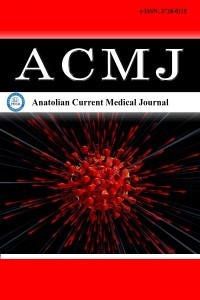1.
Younossi Zobair M. “Non-alcoholic fatty liver disease-a global public health perspective.” <em>J Hepatol.</em> 2019;70(3):531-544. doi:10.1016/j.jhep.2018.10.033
2.
Wong SK, Chin KY, Ahmad F, Ima-Nirwana S. “Regulation of inflammatory response and oxidative stress by tocotrienol in a rat model of non-alcoholic fatty liver disease.” <em>J Functional Foods</em> 2020;74:104209. doi:10.1016/j.jff.2020.104209
3.
M. Benedict, X. Zhang. Non-alcoholic fatty liver disease: an expanded review. <em>World</em> <em>J Hepatol. </em>2017;16(9):715-732. doi:10.4254/wjh.v9.i16.715
4.
Sanal, MG. Biomarkers in nonalcoholic fatty liver disease-the emperor has no clothes?. <em>World J Gastroenterol</em>. WJG 2015;21(11):3223. doi:10.3748/wjg.v21.i11.3223
5.
Eslam M, Sanyal AJ, George J, International Consensus Panel. MAFLD: a consensus-driven proposed nomenclature for metabolic associated fatty liver disease. <em>Gastroenterol</em>. 2020;158(7):1999-2014.e1. doi:10.1053/j.gastro.2019.11.312
6.
Bhanji RA, Narayanan P, Allen AM, Malhi H, Watt KD. Sarcopenia in hiding: The risk and consequence of underestimating muscle dysfunction in nonalcoholic steatohepatitis.<em>Hepatology</em>. 2017; 66(6):2055-2065. doi:10.1002/hep.29420
7.
Gan D, Wang L, Jia M, et al. Low muscle mass and low muscle strength associate with nonalcoholic fatty liver disease.<em>Clin Nutr</em>. 2020;39(4):1124-1130. doi:10.1016/j.clnu.2019.04.023
8.
Delli Bovi AP, Marciano F, Mandato C, Siano MA, Savoia M, Vajro P. Oxidative stress in non-alcoholic fatty liver disease. An updated mini review.<em>Front Med (Lausanne)</em>. 2021;8:595371. doi:10.3389/fmed.2021.595371
9.
Gonzalez A, Huerta-Salgado C, Orozco-Aguilar J, et al. Role of oxidative stress in hepatic and extrahepatic dysfunctions during nonalcoholic fatty liver disease (NAFLD).<em>Oxid Med Cell Longev</em>. 2020;2020:1617805. doi:10.1155/2020/1617805
10.
Ramos-Tovar E, Muriel P. Molecular mechanisms that link oxidative stress, ınflammation, and fibrosis in the liver.<em>Antioxidants (Basel)</em>. 2020;9(12):1279. doi:10.3390/antiox9121279
11.
Ramos-Tovar E, Muriel P. Free radicals, antioxidants, nuclear factor-E2-related factor-2 and liver damage.<em>Vitam Horm</em>. 2023; 121:271-292. doi:10.1016/bs.vh.2022.09.006
12.
Zhang L, Wang X, Cueto R, et al. Biochemical basis and metabolic interplay of redox regulation.<em>Redox Biol</em>. 2019;26:101284. doi:10.1016/j.redox.2019.101284
13.
Abrigo J, Simon F, Cabrera D, Vilos C, Cabello-Verrugio C. Mitochondrial dysfunction in skeletal muscle pathologies.<em>Curr Protein Pept Sci</em>. 2019;20(6):536-546. doi:10.2174/1389203720666190402100902
14.
Chen Z, Tian R, She Z, Cai J, Li H. Role of oxidative stress in the pathogenesis of nonalcoholic fatty liver disease [published correction appears in Free Radic Biol Med. 2021;162:174. doi: 10.1016/j.freeradbiomed.2020.06.011].<em>Free Radic Biol Med</em>. 2020;152:116-141. doi:10.1016/j.freeradbiomed.2020.02.025
15.
Reccia I, Kumar J, Akladios C, et al. Non-alcoholic fatty liver disease: a sign of systemic disease.<em>Metabolism</em>. 2017;72:94-108. doi:10.1016/j.metabol.2017.04.011
16.
Toprak D. “Hepatosteatosis (fatty liver disease).” <em>The Jl of Tur Family Phys.</em> (2011): 50-57.
17.
İmamoğlu FG, İmamoğlu Ç, Çiledağ N, Arda K, Tola MD. Classification of hepatosteatosis with ultrasonography and analysis of the effect of hepatosteatosis degree on the liver function tests.<em>Med J Muğla Sıtkı Koçman University</em>.2015;8(2<em>)</em>:23-28.
18.
Beutler E. Red Cell Metabolism. Handbook of biochemical methods. 2<sup>nd</sup> ed. <em>New York: Grune and Stratton Inc</em>. 1984: 68-70.
19.
Fridovich I. Superoxide dismutases.<em>Adv Enzymol Relat Areas Mol Biol</em>. 1974;41(0):35-97. doi:10.1002/9780470122860.ch2
20.
Ohkawa H, Ohishi N, Yagi K. Assay for lipid peroxides in animal tissues by thiobarbituric acid reaction.<em>Anal Biochem</em>. 1979;95(2):351-358. doi:10.1016/0003-2697(79)90738-3
21.
Pomacu MM, Tra?ca MD, Padureanu V, et al. Interrelation of inflammation and oxidative stress in liver cirrhosis.<em>Exp Ther Med</em>. 2021;21(6):602. doi:10.3892/etm.2021.10034
22.
Michalak A, Lach T, Cichoz-Lach H. Oxidative Stress-A Key Player in the Course of Alcohol-Related Liver Disease.<em>J Clin Med</em>. 2021;10(14):3011. doi:10.3390/jcm10143011
23.
Videla LA, Rodrigo R, Araya J, Poniachik J. Oxidative stress and depletion of hepatic long-chain polyunsaturated fatty acids may contribute to nonalcoholic fatty liver disease.<em>Free Radic Biol Med</em>. 2004;37(9):1499-1507. doi:10.1016/j.freeradbiomed.2004.06.033
24.
Samancı TÇ, Gökçimen A, Kuloğlu T, Boyacıoğlu M, Kuyucu Y, Polat S. “Biochemical and histopathological investigation of liver tissues on high fat diet fed rats.” 2022;23(1):101-107. doi:10.4274/meandros.galenos.2021.32932
25.
Manna P, Jain SK. Obesity, oxidative stress, adipose tissue dysfunction, and the associated health risks: causes and therapeutic strategies.<em>Metab Syndr Relat Disord</em>. 2015;13(10):423-444. doi:10.1089/met.2015.0095
26.
Nabih, GA, Sheshtawy NE., Mikkawy DME, Kamel MA. (2024). Serum malondialdehyde as a marker of oxidative stress in rheumatoid arthritis.<em>Egyptian Rheumatology and Rehabilitation</em>.2024;51(1):43. doi:10.1186/s43166-024-00275-4
27.
Phababpha, Suphawadee, et al. Elevation of plasma malondialdehyde levels associated with the severity of coronary atherosclerosis in coronary artery disease patients.” <em>Int J. </em>2023;10(2):3523-3529. https://www.researchgate.net/publication/37591747828-
28.
Liu WN, Hsu YC, Lu CW, Lin SC, Wu TJ, Lin GM. Serum malondialdehyde-modified low-density lipoprotein as a risk marker for peripheral arterial stiffness in maintenance hemodialysis patients.<em>Medicina (Kaunas)</em>. 2024;60(5):697. doi:10. 3390/medicina60050697
29.
Estep JM, Birerdinc A, Younossi Z. Non-invasive diagnostic tests for non-alcoholic fatty liver disease.<em>Curr Mol Med</em>. 2010; 10(2):166-172. doi:10.2174/156652410790963321
30.
Han JH, Park MH, Myung CS.<em>Garcinia cambogia</em>ameliorates non-alcoholic fatty liver disease by inhibiting oxidative stress-mediated steatosis and apoptosis through NRF2-ARE activation.<em>Antioxidants (Basel)</em>. 2021;10(8):1226. doi:10.3390/antiox10081226
</ol>
<p>

